PIPESTONE SHEEP TOUR
 2014
2014
Sheep Facility Tour
June 9, 2014
Pipestone Minnesota
www.pipestonesheep.com
Don't miss your chance to attend the 2014 Pipestone Lamb and Wool Program Sheep Facility tour on June 9, 2014. The tour will begin and end at the Minnesota West Community and Technical College, Pipestone Campus. The Sheep Facility tour is only offered once every two years. The Pipestone Lamb and Wool program has an excellent tour scheduled of four outstanding sheep operations.
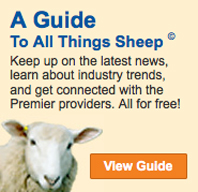
MOTHER EARTH NEWS FAIR
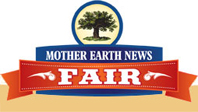 Visit us at Mother Earth News Fair
Visit us at Mother Earth News Fair
Premier's booth #1570 & 1571
Puyallup, WA
May 31-June 1, 2014
Premier's booth #151 & 153
Seven Springs, PA
September 12-14, 2014
Premier's booth #TBA
Topeka, KS
October 25-26, 2014
AMERICAN LAMB BOARD RECIPE
 Juicy Grilled American Lamb Burger with Caramelized Onion, Fennel and Lemon Relish
Juicy Grilled American Lamb Burger with Caramelized Onion, Fennel and Lemon Relish
Lamb Burgers
| • |
2 pounds ground American Lamb |
| • |
Salt and freshly ground black pepper |
| • |
8 dinner rolls, or 4 large buns |
| • |
Mayonnaise, as needed |
| • |
Arugula leaves, as needed |
Gently form the lamb into 8 burgers; make sure meat is not compressed. Season generously with salt and pepper; grill to desired doneness.
See Complete Recipe
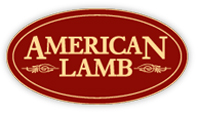 Recipe and image provided by the American Lamb Board. Remember, sign up (located on the right side, top or bottom of home page) for their "Recipe Newsletter."
Recipe and image provided by the American Lamb Board. Remember, sign up (located on the right side, top or bottom of home page) for their "Recipe Newsletter."
See more lamb recipes on our Guide
CROOKS
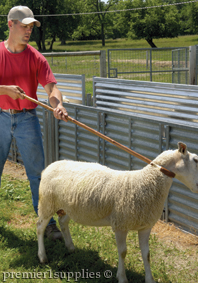
Catch sheep by the neck as they move past you. Natural wood bumps on our Sweet Chestnut Crook provide a secure grip.
Premier crook tips…
| 1. |
To catch sheep and lambs with a neck crook—Once the neck is inside the loop, rotate the crook with your wrist. This applies pressure to both sides of the neck and allows you to pull or reach to the animal. |
| 2. |
To catch a ewe with newborn lambs on the pasture—Catch lamb and hold onto it one handed. Lay a leg crook between the lamb and ewe with the leg head toward the ewe. The ewe will likely face her lambs. When the ewe’s front foot is near, instantly raise the crook and snare her front leg.
|
| 3. |
The best crook for hair sheep? Both neck and leg crooks work, as the neck and leg sizes are much the same as wooled breeds. |
See our full line of Crooks.
|
 |
 |
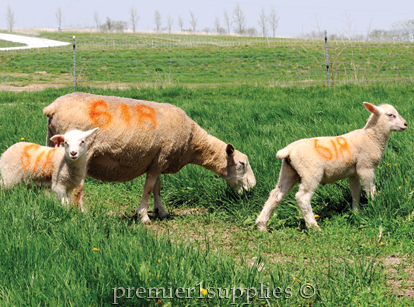
Ewe and her lambs marked with Sprayline and matching numbers. Numbers tell at what point in the lambing season the lambs were born. Color tells us whether lambs were born as singles (green), twins (blue) or triplets (orange).
Busy days at Premier
After months of lambing things are looking like they are going to slow down. We've just about reached the last of the yearlings and once they're done our lambing season is complete (I'll say nothing about our kidding season though). Since we have been consistently lambing since December, our management calendar is not exactly set in stone. In the same day we could be caring for newborn lambs, weaning, and hauling finished lambs to market. It keeps us busy. On top of that, we're also reseeding pastures and building/moving fences. So in this newsletter we have included a few articles from all stages of sheep management. Have an excellent day.
Free National Sheep Improvement Program (NSIP) webinars
(NSIP is a quantitative genetic selection tool designed to help sheep and goat producers make better breeding decisions.)
Topics include:
| • |
How the goat industry can benefit from NSIP |
| • |
How, when and what data to collect |
| • |
Challenges of moving to a performance based flock |
| • |
How to enter and submit data |
| • |
How to use the data |
|
ASI Fast Facts: A 15 page snapshot of the changes that have occurred in the US sheep industry over the past decades. A fascinating series of charts, tables and graphs.
|
Sheep Industry Review, 2014, First Quarter—A detailed examination of the current status of the US lamb industry.
Strong emphasis on market data.
|
WEANING LAMBS
Sheep 201—Weaning Lambs
Susan Schoenian
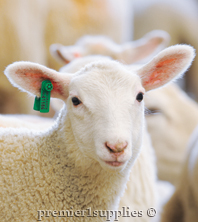
A feeder lamb identified with a Q-flex® 1.5 scrapie tag. At Premier, green tags signify a single born lamb (blue for twins and orange for triplets).
|
Weaning is a crucial time in the management of ewes and lambs. It is the practice of removing from lambs the milk diet provided by the ewe (or a milk replacement diet). From the milk diet, lambs are moved onto forage or grain-based diets. The separation can be stressful for both ewes and lambs. It should be the goal of all producers to minimize stress at weaning.
When to wean
Weaning age varies greatly in the sheep industry and depends upon many factors including availability of pasture and other feed supplies and target market. Lambs have been weaned successfully as early as 14 days, while some lambs are allowed to wean naturally, staying with the dams for six months or more. In fact, some lambs are marketed before they are weaned.
Early in life, the lamb cannot digest anything but milk. However, by 3 weeks of age, the developed rumen makes the lamb more efficient than the ewe. Typically, the ewe's milk production peaks 3 to 4 weeks after lambing and steadily declines to about half as much by 10 weeks. About 74 percent of all milk is produced in the first 8 weeks of lactation.
READ MORE »
Additional articles on our Guide:
EXTENSION NEWS
Electric Fencing for Sheep
Gerald Fitch, Extension Sheep Specialist, Oklahoma Cooperative Extension Service
The use of electric fencing for sheep is relatively new in the United States. Several other countries have used electric fencing with great success for several decades now. Electric fencing is more economical than standard barbed wire or hog wire fencing. Electric fencing also allows for temporary fencing to subdivide pastures, which can increase the stocking rate and forage utilization and decrease parasite problems through rotational grazing.
Why has electric fencing not caught on in the United States? The main reason is the past failures producers have experienced due to utilizing poor quality fence chargers and not understanding the basics of electric fencing. The basic principles of fence construction, grounding, and current flow must be understood to ensure correct fence design with minimal maintenance and maximum current flow.
Fence Chargers and Grounding
The major mistake that is made in electric fencing is the use of poor quality, “cheaper” fence chargers and the improper grounding of the fence. The fence charger is the most important purchase in construction of the electric fence. Electric fence chargers have become much more sophisticated than the older type low powered fence energizers. Electric fence for sheep can be maintained even in remote areas with the new solar powered chargers.
Voltage must be maintained at all times if an electric fence is to be effective. The new high voltage energizers produce a very short, .003 second, high-energy pulse. The high-energy pulse charges even a long length of heavily weeded fence with a shock that livestock respect. The short pulse limits the overall energy, so posts are not burned and the wires are safe, though painful to touch. The short pulse also removes the chances of fire when grass contacts the wire.
READ MORE »
Premier's electric
fencing options:
|
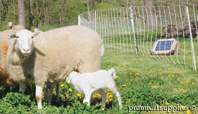
|
WHAT TO GROW IN YOUR PASTURE
Pasture Species Selection
for Sheep
Dan Undersander, University of Wisconsin
Pasture and hay forage crops generally fall into four categories:
| 1. |
Legumes |
| 2. |
Cool Season Grasses
|
| 3. |
Warm Season Grasses |
| 4. |
Alternate/annual forages |
The last category includes many perennials crops, such as rape, kale, comfrey, and all annual forage crops, such as sudangrass, sorghum, and various millets. None of these should be considered for sheep pasture in other than emergency situations.
Warm season grasses are generally adapted to warmer climates than Minnesota,
Michigan and Wisconsin because they require warmer temperatures to grow. Therefore they start later in the spring and quit growing earlier in the fall than cool season grasses. These species include most prairie species, such as switchgrass, big bluestem, little bluestem, and Indiangrass. Warm season grasses are used for ground cover and wildlife in northern states but if grazed extensively will be crowded out by cool season grasses that will come in naturally. Neither should warm season grasses be mixed with cool season grasses in pastures because the cool season grasses will predominate. Warm season grasses are generally not recommended for sheep pasture in the northern states.
READ MORE »
|
|